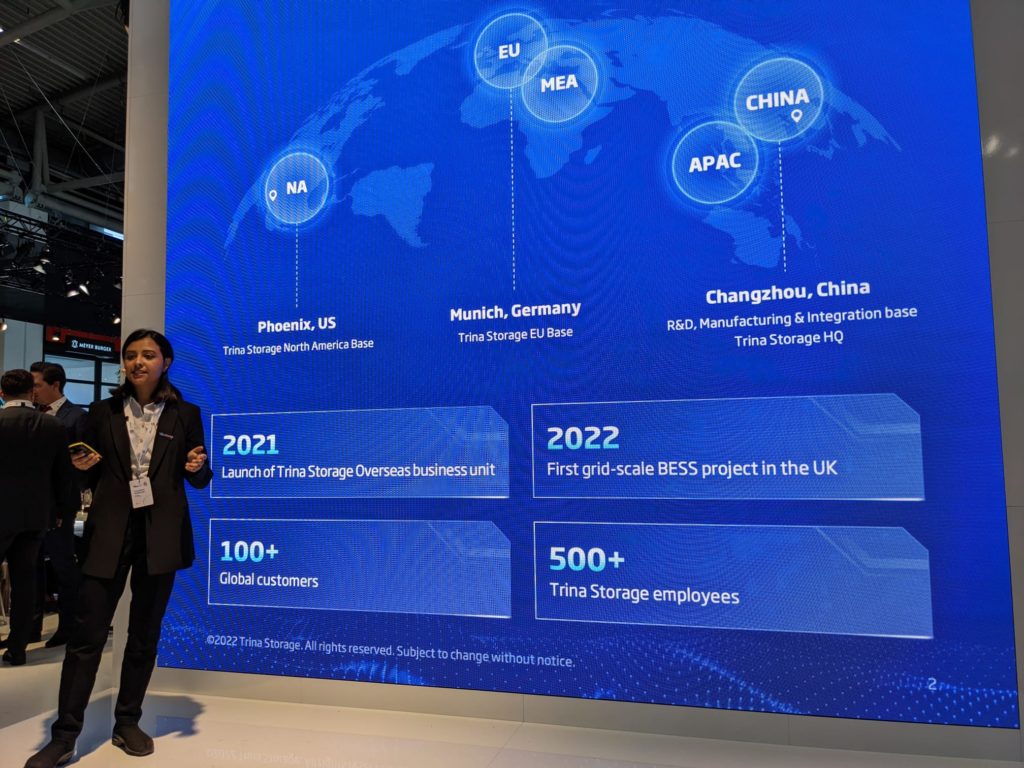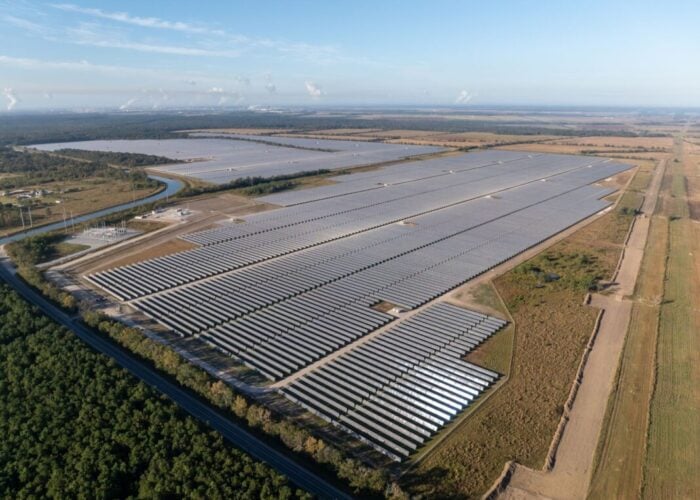
Following on from the “unveiling” or soft launch of its battery energy storage system (BESS) at Intersolar 2021, Trina Storage has officially launched its Elementa BESS, with an particular focus on safety features and cell performance, at Intersolar 2022, where PV Tech is running a live blog.
The “all new” Elementa system is a LFP BESS system in a DC cabinet with busbar connection resulting in easy scale up, the company said. It is a product of continued research and development (R&D) in China, Trina said, adding that it had over 100 researchers working on storage innovation across its facilities.
Unlock unlimited access for 12 whole months of distinctive global analysis
Photovoltaics International is now included.
- Regular insight and analysis of the industry’s biggest developments
- In-depth interviews with the industry’s leading figures
- Unlimited digital access to the PV Tech Power journal catalogue
- Unlimited digital access to the Photovoltaics International journal catalogue
- Access to more than 1,000 technical papers
- Discounts on Solar Media’s portfolio of events, in-person and virtual
Trina Storage has a annual production capacity of 3GWh but plans to scale this up by “several” gigawatts over the new “few years” as it strives for greater vertical integration.
Elementa has a bi-directional liquid cooling system, gas sensors as well as heat and smoke detectors, with Trina Storage keen to stress the BESS’s improved cell performance compared to competitors, with Elementa providing up to 10,000 cycles, which Trina said was 25% more than the Tier 1 market average.
Moreover, Elementa can reduce installation times by up to 70%, Trina Storage claimed. This, coupled better cell performance and safety features, could result in a 7.2% reduction in capex and opex costs and a 25% fall in the total cost of operating, Trina said.
Established in 2021, Trina Storage has already successful supplied one 50MW / 56.2MWh BESS project in the UK and has more than 100 customers globally.
Out of its EMEA customers, 30% are EPCs and 70% are developers, independent power producers (IPPs) and investors, according to the company presentation.







